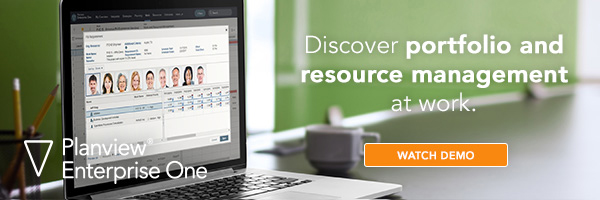
Now more than ever, organizations are relying on software applications and outside technology vendors to meet their information technology needs. Yet, as these requirements evolve, it becomes difficult to keep track of what applications you have, the purpose they serve, usage, and value. This is a problem that application portfolio management (APM) can solve.
What is Application Portfolio Management?
Application Portfolio Management refers to the discipline of gathering data in relation to each technology application that a company uses, in order to monitor and measure the business value of each application.
APM relies on a scoring algorithm, in which each application in the company’s inventory is ranked based on a set of criteria, such as:
- The cost to build and maintain each application
- The business value delivered by each application
- The expected lifespan of each application
Ultimately, an APM process can enable organizations to modernize and streamline their application inventory, providing a transparent look at how each application is being used and how well it contributes to the organization’s overall technology goals.
Benefits of Application Portfolio Management
By deploying an effective APM solution, an organization can:
- Strategically determine which applications are proving their business value;
- Eliminate those that do not meet the business’ needs or strategic business goals; and
- Support the development of a forward-thinking approach to application management.
This forward-thinking approach focuses on building an application inventory with the flexibility to adapt and scale to meet future business needs. As a result, an APM system does help business evaluate IT expenses to more effectively deploy their resources, allowing them to free up more of their IT budget to invest in new projects that will contribute to their companies’ strategic goals and ensure that they are investing in modern, scalable technology.
5 Key Strategies to Manage an Application Portfolio
Use this five-step process to assess and manage your company’s own application portfolio:

- Create a full inventory of all the applications used or owned by your company.
Categorize and rationalize each application that has been used in the past, is currently in use, or has been proposed for future projects. Take note of the cost to operate each application, the function it performs, which other applications it is used with concurrently, and which projects it is used to support. As this can be a large undertaking, you may wish to initially focus on inventorying applications that are being used for current projects before analyzing applications that are infrequently used.
- Eliminate redundant applications.
Once the inventory is completed, you should have a good perspective of which business functions are performed by each application, and whether there are applications with duplicate functions. In this process, you are likely to find that a number of legacy applications are used to perform tasks that overlap with the capabilities of new applications. Take this opportunity to eliminate such redundant applications, which may result in significant cost-savings for the IT department.
- Identify the business value and function of each application.
After eliminating applications that are clearly redundant, you can now assess the value of each remaining application by analyzing its business value. Rather than focusing solely on financial concerns, your organization must take a comprehensive overview to determine the value generated by each application. To do this, each IT application should be scored on six separate criteria: strategic alignment, business process impact, architecture, direct payback, risk and customer/revenue.
- Map your applications in a TIME Chart.
Once the business value and function of each application has been identified, determine where each application fits in a TIME Chart, based on Gartner’s Portfolio Triage process.
The TIME Chart consists of four high-level categories:
- Tolerate—The applications in this group are those that deliver business value but are not necessarily built on modern platforms or well-integrated with the company’s infrastructure.
- Invest/Innovate/Integrate—This grouping of applications shows great promise to deliver significant business value but will require the company to invest in integrating or upgrading existing infrastructure to ensure that these applications are able to function at the highest level.
- Migrate/Modernize/Remediate—This application category refers to technologies that involve software that is no longer supported or rely on a small group of human resources with specialized knowledge.
- Eliminate—In addition to redundant applications, you may find in your scoring that some of the applications in your inventory have little to no business value, or that the costs of operating the application far outweigh the results delivered. In these situations, such applications should be marked for elimination.
After completing a TIME Chart, your organization will have a clear perspective of where each application fits into the IT process, and what steps should be taken to maximize the business value of each one.
- Optimize your resources against your applications.
At this point, you should have a good overview of the costs and resources involved in operating each application. Now, work to maximize efficiency in each application process by ensuring that your human supply chain is effectively deployed and managed. A portfolio resource management platform can be used to monitor and track inefficiencies in the process, and to implement highly effective and transparent work process systems.
Final Thoughts
Application portfolio management is essential in any organization that relies on applications to conquer business needs. The proliferation of application over the last decade has led to an increasing reliance on application management, maintenance, and optimization. The trajectory of application importance is even more critical, as organizations digitally transform their businesses.
Organizations that strive to reap the benefits of their application investments need to adopt an APM process as part of the overall IT and EA strategy. If an organization’s application stack is not actively managed, the organization loses the ability to remain agile and innovative and may fall behind competitors. By implementing a comprehensive and effective APM process today, your enterprise can make the technological transformations that will help it stay ahead of the curve tomorrow.
Interested to learn more and see how Planview can help? Register for a free demo of Planview Portfolios today.


![MassMutual Captures the Advances Enterprise Architecture Capabilities [Webinar]](https://blog.planview.com/wp-content/uploads/2018/08/MassMutual.gif)


